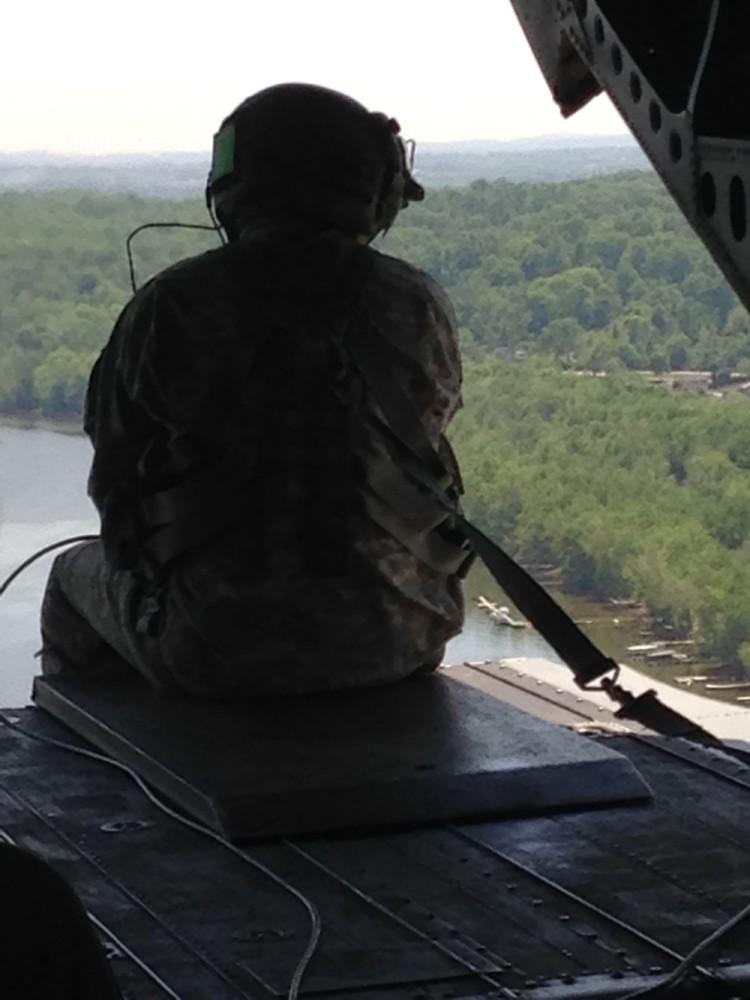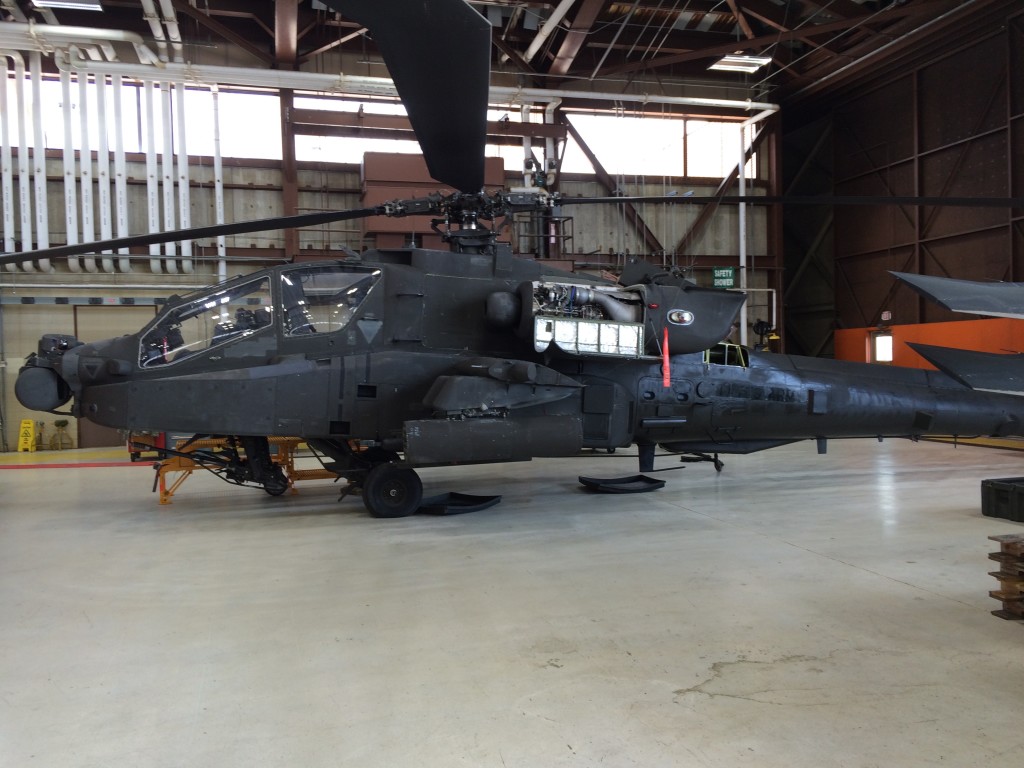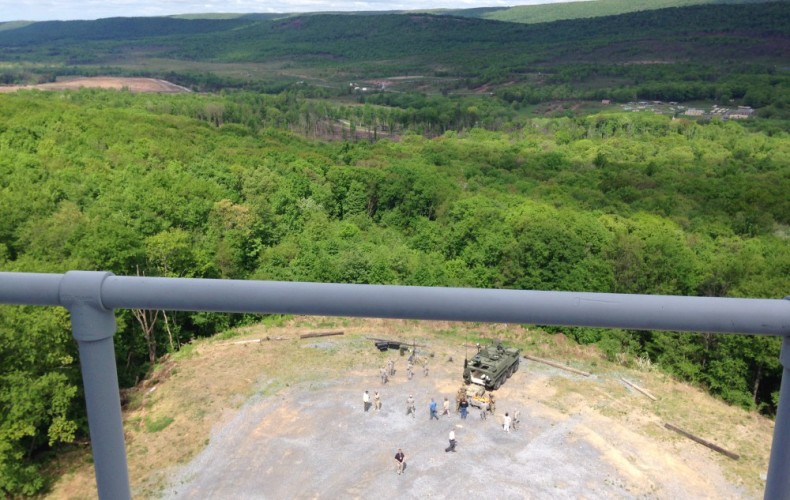Barber Trucking’s CFO Tia Young took part in a local Employer Support of the Guard and Reserve (ESGR) event last month in Ft. Indiantown Gap, PA. Here is blog post Part II of II where she shares her experience with the ESGR Bosslift program, which she attended as a Barber Trucking liaison, as a way to continue being a truly military friendly employer.
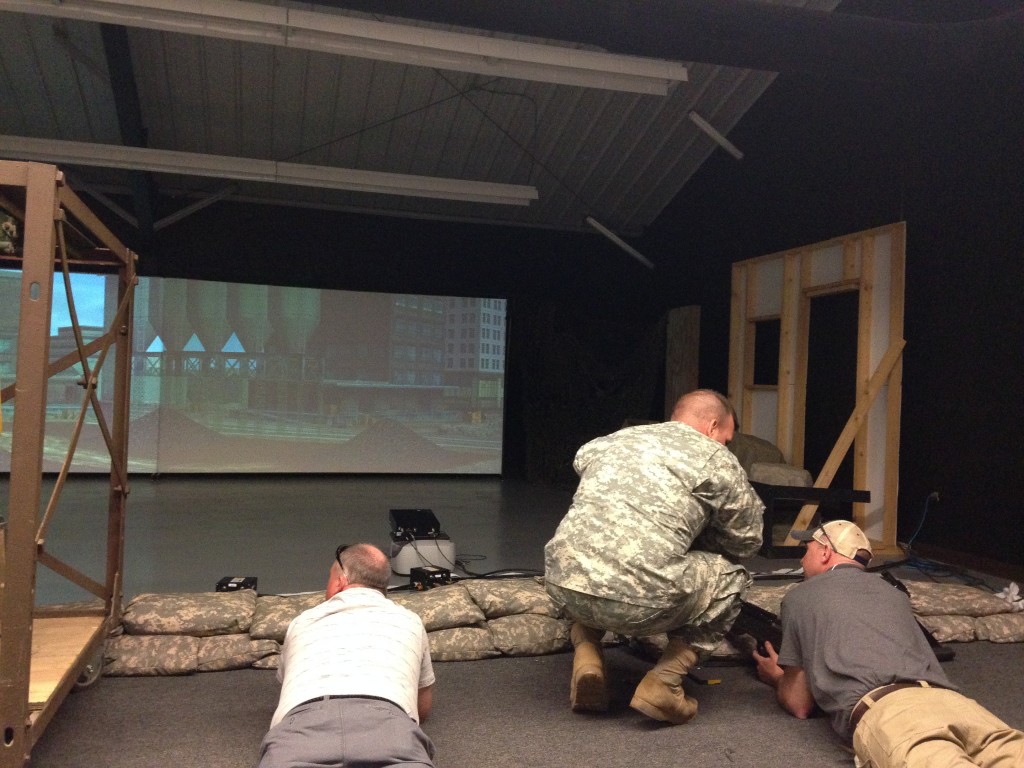 The next day we had another moment to hear from a few speakers as to how we could hire veterans and help the soldiers who so selflessly gave or continue to give their service to our country. From there, we loaded back up on the bus and traveled to Engagement Skills Training 2000 where we participated in a firearm simulator. They had an array of firearms lined up. There was a projector screen, about 8’ by 24’ in dimension, which displayed video graphics.
The next day we had another moment to hear from a few speakers as to how we could hire veterans and help the soldiers who so selflessly gave or continue to give their service to our country. From there, we loaded back up on the bus and traveled to Engagement Skills Training 2000 where we participated in a firearm simulator. They had an array of firearms lined up. There was a projector screen, about 8’ by 24’ in dimension, which displayed video graphics.
They divided us into two groups, and I was able to watch the first group participate. Again, the scenario displayed on the screen was introductory; yet was difficult and realistically set in an Afghanistan desert. We watched as enemy soldiers dislodged from the armored vehicles in the distance. The gunmen (employers participating in the program) were to take fire as the enemy quickly closed in, but in our case, it was clearly a battle lost. This was just another example of the elite training our men and women of the trained forces go through.
The next event was a virtual classroom where we were able to learn first hand how the soldier participates in one of the courses for tank training. We entered the classroom and sat down at the computer. We each had a headset and started the virtual game. At first I thought it was a video game, but as I followed the instructions, a PowerPoint popped up and started teaching us about different types of terrain.
I learned about draws and depressions and terrains on this Earth I didn’t even know had a name. We drove the whole way home quizzing each other on what type of terrain we were coming upon. It was interesting and inquisitive to realize that something we look at our whole life was maybe not the name we had always referred to it as.
The next stop was the tank, or armored vehicle section. I was able to observe each armory vehicle and learn about the mechanics of each one. It was very interesting to learn about the extreme situations that each soldier could endure. For example, it may be necessary for these soldiers to be secluded in a confined tank for 30 plus days without being able to leave the armored vehicle.
It is unfortunate that our military has to prepare them for this, but it’s important to do for preparation to deploy overseas and for worst case scenarios. The capabilities and technology of the armored tanks are very impressive, as well. They have tanks that surgery can be performed in as there is a remote screen that can connect to a live surgeon who can read all the life signs and guide the crew. There is a tank that can repel large firearm strikes. There are tanks that can send ammo down range a mile and strike a target. Our military is skilled beyond words, and again, this is just the surface.
The next place we were bussed to was the aviation center. However, this was the aviation center that housed the Blackhawks, Apache and Chinook helicopters. It was very impressive, and the gentlemen that spoke to us were exceptionally knowledgeable. The Major welcomed us and took us to the room where he explained to us their mission and pieced us in two groups.
The first half was to tour the center and learn about all of the incredible aircraft on base; the second half was to go on a Chinook flight! We were lucky to be in the second half as we were the first to take flight. We made our way to the aircraft, wearing ear plugs, gripping tight to loose clothes, shutting our eyes and holding our breath as to not breathe in the bursts of air jet fuel pushed by the highly intensive wind flow of the rotors.
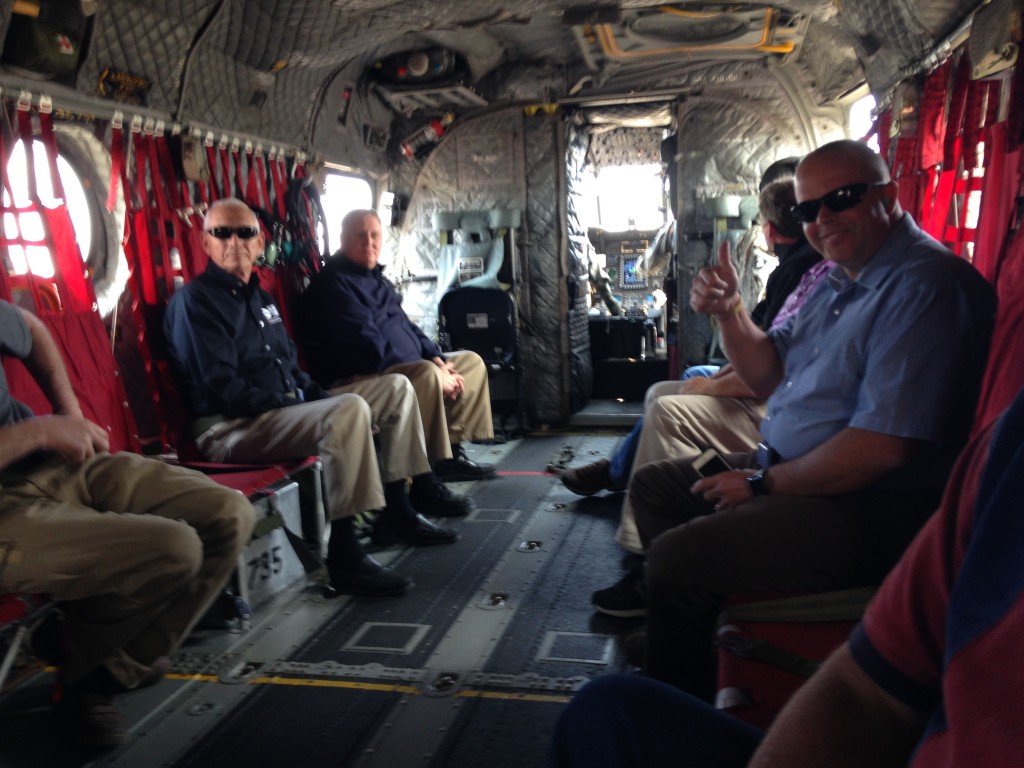 Once on the aircraft, we all secured our seatbelts and anxiously awaited take off. There were two soldiers in the back of the Chinook that helped coordinate our onboarding and safety. Once we took off, they continued to guard the ground and for a while even sat post with the back gate down, legs dangling. They checked all of the mechanics midflight and continued to watch as if in action.
Once on the aircraft, we all secured our seatbelts and anxiously awaited take off. There were two soldiers in the back of the Chinook that helped coordinate our onboarding and safety. Once we took off, they continued to guard the ground and for a while even sat post with the back gate down, legs dangling. They checked all of the mechanics midflight and continued to watch as if in action.
I watched towards the front, as well, as the pilots made maneuvers and switched many different lights and buttons. It was again remarkable to see the skills, training, and mastership that was behind all of these operations. We flew over the Susquehanna and over Harrisburg; it was a beautiful ride.
Once we off boarded the helicopter, we toured the facility with the Major and Warrant Officer who taught us more about each aircraft. The Chinook is an amazing piece of aircraft as it can help domestically by rescuing victims of natural disasters or providing cargo to remote locations; however the bottom is not firearm proof, so it is not ideal for battle.
We learned about the Apache helicopter, which is a very powerful war weapon. It amazed me to learn of the different firearm techniques it has as well as the protection it provides its operators. The Blackhawk (or crash-hawk as the Army and Guard refer to it), is also an amazing aircraft as it is extremely safe and durable and is used as a tactical transport for passengers.
I could literally take a whole page describing my experiences with these aircraft and what I learned and what impressed me, but it is again beyond words that I can express the level of professionalism and technology that this department displayed.
I left this experience wishing that I could learn more. Because what I learned and observed only further led me to believe how incredibly blessed we are, to not only live in America with this incredible defensive task force, but also to live amongst these soldiers day in and day out and call them friends and family.
I am beyond amazed at the training and skill set they have mastered yet the humbleness of their character. I am beyond appreciative for having this experience and infinitely grateful for the security my family and friends have because of our amazing soldiers and country. There are no words for the gratitude I have for each and every one of you that have served to protect us.
